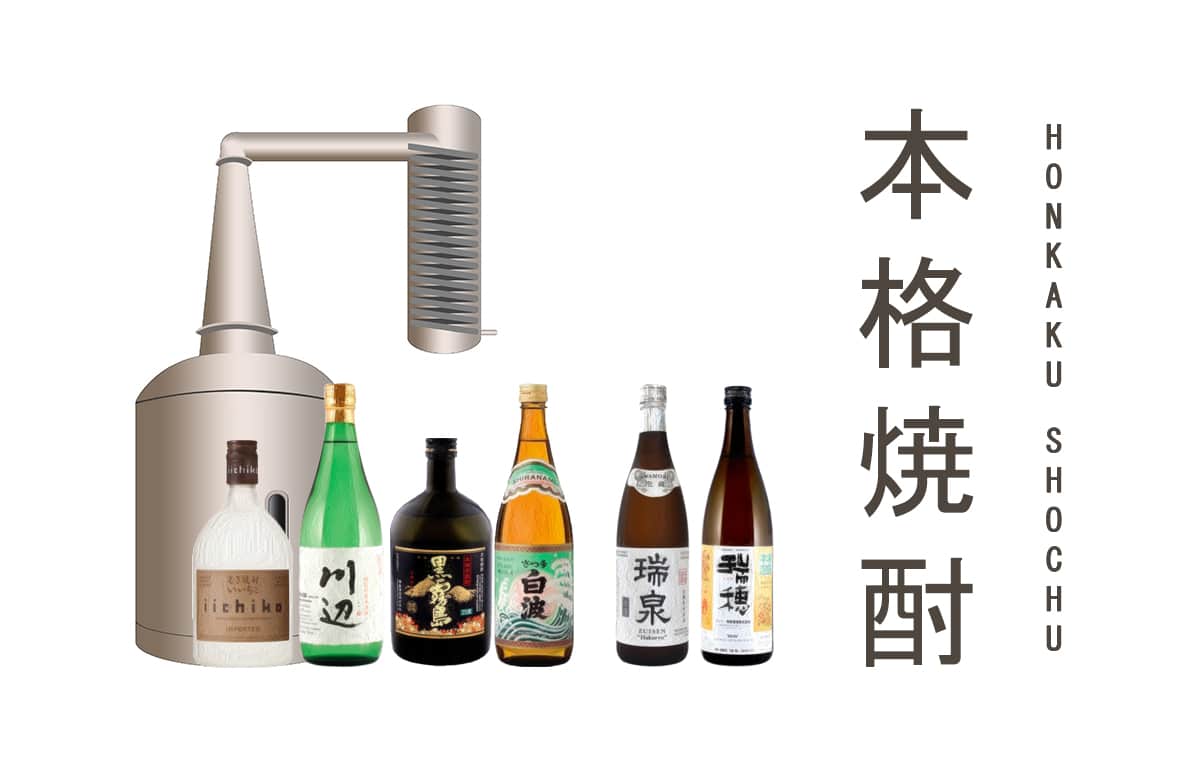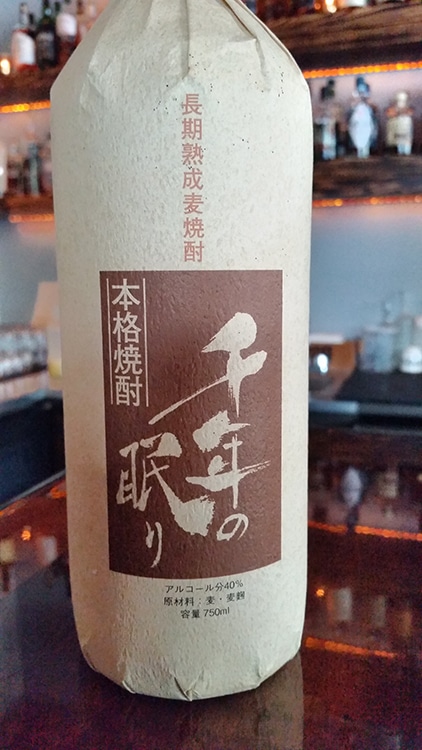
Honkaku shochu is synonymous with quality Japanese shochu. This page provides an overview of this original shochu type, how it’s made, and what makes it unique.
What is Honkaku Shochu?
Honkaku shochu (本格焼酎), aka otsurui shochu (乙類焼酎), is a traditional Japanese spirit. Around 55 ingredients are permitted, but sweet potato, rice, and barley are the most commonly used. Like sake, honkaku shochu employs a koji-based multiple parallel fermentation.
But after fermentation, the mash (moromi) is distilled once in a pot still. Its single distillation process is unique, allowing the flavor of the original ingredient to shine through.
Honkaku shochu cannot have added sugar. Single distillation shochu is the broader category used when sugars or other flavoring agents are added.
Legal Requirements
Honkaku shochu is subject to strict legal requirements. It must be distilled only once in a single distillation machine, such as a pot still, rather than in a continuous column still. Its ABV must be 45% or less, as single distillation cannot produce a higher alcohol content than this naturally.
In addition, the ingredients used to make honkaku shochu must not include malt, fruit (except dates), juniper berries, or saccharine substances. Kokuto shochu from Amami is the one exception to the no saccharides rule.
Color is also a closely controlled variable of honkaku shochu. It must be less than 0.08 on a spectrometer. Essentially, shochu cannot be very dark in color. Honkaku shochu cannot be filtered with birch charcoal, either. So aged shochu with a dark color must be diluted with clearer shochu to reduce color.
Honkaku Shochu Production
Honkaku starts with the fermentation of koji and the principal raw ingredient. Koji is typically koji rice, but sweet potato, barley, and soba koji also may be employed. The fermentation is somewhat similar to brewing sake and yields moromi (fermented, unfiltered mash).
The moromi goes into a pot still and is distilled once. This single distillation is unique in the spirits world. Most spirits (whisky, rum, brandy, vodka) are distilled two or more times. The rich flavor and aroma of the original ingredient remain after only one distillation.
The uncut (genshu) shochu will have a maximum ABV of around 45%. It’s then aged for 60+ days. Steel tanks are common for short-term aging. Earthenware pots (kame, tsubo) are a more traditional vessel, and wooden barrels are also used.
After aging, blending and water dilution are the next steps in honkaku shochu production. Final alcohol contents typically range from 20-36%. After this, the final steps are bottling and shipping.

Flavor of Honkaku
There is no defining flavor of honkaku shochu.
Several variables influence flavor. The type of koji used (black, white, or yellow) affects the taste. The other raw ingredients are also a big factor. And the still design, materials, and the distillation pressure (atmospheric or vacuum) also play a role. Additionally, the length of aging and materials used to house the shochu can impact its flavor.
Each variable is crucial to producing honkaku shochu with a distinct taste. But the simplest way to categorize the flavors of honkaku shochu is by type or primary ingredient.
Ingredients and Types of Honkaku Shochu
The most common type of honkaku on the market is imo (sweet potato). Honkaku imo shochu tends to be rich, fruity, and floral. A distinct earthy quality is prevalent, as well.
The other two heavyweights are barley and rice shochu. Honkaku rice shochu is often light, sake-like, and smooth. Barley shochu is somewhat similar, but it also depends on where it’s made. Of the two, barley is the much more prevalent ingredient. Some of this is likely due to the popularity of the Iichiko brand.
Soba, Amami kokuto, and sake kasu are also significant honkaku shochu ingredients. Soba shochu tends to be light and nutty. But there are rich examples too. Kokuto (black sugar) shochu is a specialty of the Amami Islands. It’s rum-like, tropical fruit-driven, and slightly savory. Finally, sake kasu shochu (kasutori and kasumoromitori) is generally light, semi-neutral, and grainy. But fruity, sake-like brands exist, especially kasumoromitori.
Awamori, made exclusively with black koji long-grain rice, is sometimes categorized as Honkaku Shochu Awamori. It’s traditionally aged for a number of years. And Awamori tends to be grainy, savory, citrusy, and rich.
As mentioned previously, over 55 ingredients are permitted for honkaku shochu. The flavor of the original ingredients will always be present in honkaku. Carrot, green tea, and shiso shochu are probably the easiest to find. Other ingredients include red bean, peanut, corn, enoki, shiitake, daikon, konbu, chestnut, plum pip, and milk.